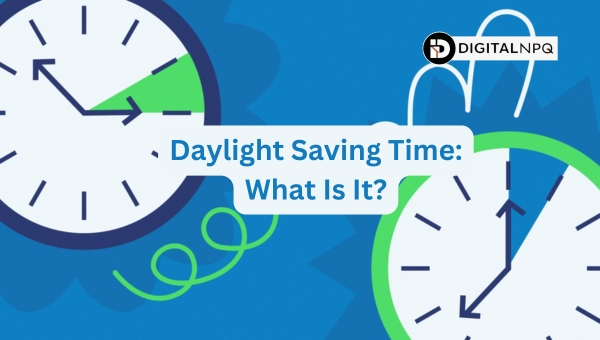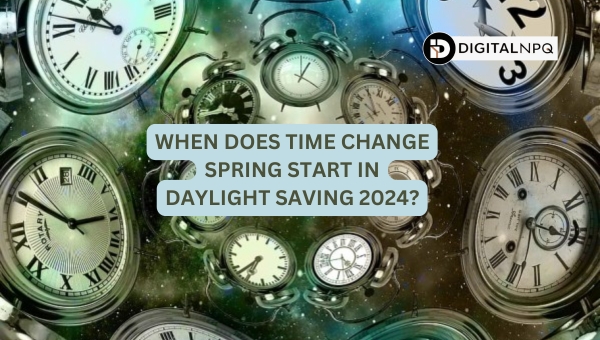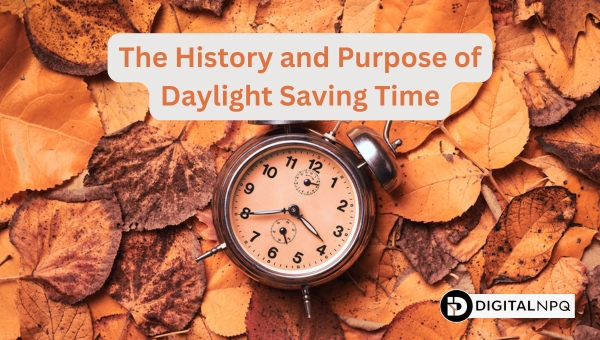Time Change Spring 2024: Everything You Need to Know

It may seem difficult to adjust to the time change in the spring of 2024, but we’ve got you covered. This page explores the history, the reasons behind the 2024 date changes, and why we change our clocks.
You’ll also learn how different states observe it, potential permanent changes, and practical tips to make the transition smoother. By understanding these aspects, you’ll be better prepared and less stressed when the time change spring 2024 arrives.
Let’s dive in and make this shift easier for you!
Daylight Saving Time: What Is It?
Daylight Saving Time (DST) is a practice observed in many countries where clocks are set forward by one hour during the warmer months, typically in spring.

This shift aims to extend evening daylight, making better use of the longer days. As we prepare for the time change in spring 2024, let’s delve into what DST entails.
Understanding Daylight Saving Time
Daylight Saving Time involves adjusting the clock to make better use of daylight during the longer days of summer. By setting clocks forward by one hour in the spring, evenings have more daylight while mornings have less.
This practice was first implemented to save energy by reducing the need for artificial lighting in the evening. DST typically starts in spring and ends in fall, reverting to standard time.
This approach helps people enjoy more daylight in the evening, which can lead to energy savings and more outdoor activities.
When Does Time Change Spring Start in Daylight Saving 2024?
Spring is a time of renewal, and with it comes the shift to Daylight Saving Time (DST). This change impacts our daily routines, giving us more daylight in the evenings.

Knowing the precise start date and time for this adjustment is essential for a smooth transition.
The exact Dates and Times
In 2024, Daylight Saving Time will begin as follows:
- Date: Sunday, March 10, 2024
- Time: 2:00 a.m. local time
At this moment, clocks will be set forward by one hour, meaning that 2:00 a.m. will instantly become 3:00 a.m.
This adjustment results in evenings having more daylight, which can be beneficial for various activities and energy conservation.
Mark your calendars to ensure you’re prepared for this annual time change.
Also Read: Capital One Settlement: All You Need to Know
The History and Purpose of Daylight Saving Time
Daylight Saving Time (DST) has an interesting past and plays a significant role in our daily lives.

Understanding its origins and how it impacts society can help us appreciate why we adjust our clocks twice a year. Let’s delve into both the historical roots and societal effects of DST.
Origins and Adoption
The idea of Daylight Saving Time was first introduced to save energy. It all began during World War I when Germany implemented DST in 1916 to conserve fuel by extending daylight hours. This concept quickly spread to other countries, including the United States.
Although the U.S. initially dropped DST after the war, it was reinstated during World War II for similar reasons. Over the years, various changes and adjustments have been made, but the core idea remains the same: to make better use of daylight.
Impact on Society
Daylight Saving Time influences many aspects of our daily lives.
Here are some key effects:
- Economic Benefits: More daylight in the evening encourages outdoor activities and shopping, which can boost local economies.
- Energy Savings: By extending daylight hours, the need for artificial lighting is reduced, potentially saving energy.
- Health Concerns: The time change can disrupt sleep patterns, leading to temporary health issues such as fatigue and increased risk of heart attacks.
- Safety: More daylight during evening hours can reduce traffic accidents and improve pedestrian safety.
Daylight Saving Time continues to be a topic of discussion and debate, reflecting its significant role in modern society.
State-by-State Observance of Daylight Saving Time
Daylight Saving Time (DST) is observed differently across the United States. While most states participate in the practice, a few do not.
Understanding which states follow DST and which do not can help you stay informed and prepared for any time changes.
States That Observe DST
Most states in the U.S. observe Daylight Saving Time. Here is a list of key states that follow this practice:
- California: Known for its long summer days, California shifts its clocks forward in the spring.
- New York: Residents enjoy extended evening daylight, which is significant for a bustling city that never sleeps.
- Texas: This large state follows DST, impacting its diverse range of cities and rural areas.
- Florida: With its popular beaches and tourist attractions, Florida benefits from the longer daylight hours in the evenings.
- Illinois: Home to Chicago, Illinois also observes DST to maximize daylight in the evenings.
In total, 48 states participate in Daylight Saving Time, adjusting their clocks forward in the spring and back in the fall.
States That Do Not Observe DST
A few states and territories have opted out of observing Daylight Saving Time.
Here’s a list of those areas:
- Arizona: With the exception of the Navajo Nation, Arizona does not observe DST. This decision helps avoid the extreme heat of extended daylight hours.
- Hawaii: Due to its tropical location, Hawaii does not follow DST, as the length of day remains relatively constant throughout the year.
Additionally, several U.S. territories do not participate in DST, including:
- Puerto Rico
- Guam
- American Samoa
- U.S. Virgin Islands
These regions maintain a consistent time year-round, providing stability for residents and travelers alike.
Also Read: IRS Stimulus Check Updates 2024: What You Should Know
Potential Permanent Changes to Daylight Saving Time
As we look ahead to the future of Daylight Saving Time (DST), discussions about making it a permanent fixture have gained momentum.
This section delves into the legislative efforts and weighs the pros and cons of such a change.
Legislative Efforts
Several legislative attempts have been made to make Daylight Saving Time permanent.
- In 2022, the U.S. Senate passed the Sunshine Protection Act, aimed at eliminating the biannual time changes and keeping DST year-round.
- Despite Senate approval, the bill has not yet passed in the House of Representatives.
- New versions of this bill continue to be introduced, showing ongoing interest in this potential change.
Pros and Cons
Analyzing the potential benefits and drawbacks of a permanent Daylight Saving Time is crucial for understanding its impact.
Pros:
- Increased Evening Daylight: More daylight in the evening can encourage outdoor activities and benefit mental health.
- Energy Savings: Extended daylight reduces the need for artificial lighting, potentially lowering energy consumption.
- Economic Benefits: Longer daylight hours can boost retail sales and other economic activities.
Cons:
- Health Risks: Permanent DST may disrupt natural sleep cycles, leading to health issues like sleep disorders.
- Regional Discrepancies: The impact may vary by region, with some areas benefiting more than others.
- Adjustment Period: The initial transition could be challenging for people accustomed to the current system.
By considering these legislative efforts and the pros and cons, we can better understand the implications of making Daylight Saving Time permanent.
Tips for Adjusting to the Time Change
Adjusting to the time change in spring can be challenging for many. By planning ahead and making small adjustments, you can ease the transition. Here are some practical tips to help you prepare and adapt before and after the time change.
Before the Time Change
Preparing for the time change in advance can help minimize its impact.
- Gradually Adjust Your Sleep Schedule: Start going to bed and waking up 15 minutes earlier each day leading up to the time change.
- Create a Relaxing Bedtime Routine: Engage in calming activities, such as reading or taking a warm bath, to signal to your body that it’s time to wind down.
- Limit Exposure to Screens: Reduce screen time from electronic devices at least an hour before bed, as the blue light can interfere with your sleep cycle.
- Monitor Caffeine and Alcohol Intake: Avoid consuming caffeine or alcohol in the late afternoon and evening, as both can disrupt sleep patterns.
- Get Plenty of Natural Light: Increase your exposure to natural light, especially in the morning, to help regulate your body’s internal clock.
After the Time Change
Once the time change has occurred, it’s important to help your body adjust to the new schedule.
- Maintain a Consistent Sleep Schedule: Go to bed and wake up at the same time every day, even on weekends, to help regulate your sleep pattern.
- Stay Active: Physical activity can help you feel more energized during the day and promote better sleep at night. Aim for at least 30 minutes of exercise most days.
- Eat Healthily: Consume a balanced diet rich in fruits, vegetables, and whole grains to maintain energy levels and overall well-being.
- Limit Naps: If you feel tired, try to avoid long naps. If necessary, keep naps short (20-30 minutes) and early in the day.
- Expose Yourself to Morning Light: Spend time outside in the morning light to help reset your internal clock and improve your mood.
- Be Patient: Understand that it may take a few days for your body to fully adjust, so be patient with yourself during this transition period.
FAQs
What is the Sunshine Protection Act of 2024?
The Sunshine Protection Act of 2024 is a proposal aimed at making Daylight Saving Time permanent across the United States. It seeks to eliminate the need to change clocks twice a year.
Will there be Daylight Savings Time in 2026?
As of now, Daylight Saving Time is still scheduled to take place in 2026. Unless new legislation is passed, the practice of setting clocks forward in the spring and back in the fall will continue.
Are all states stopping Daylight Savings Time?
No, not all states are stopping Daylight Saving Time. While some states have considered opting out, most states still participate in the practice. Only a few states like Arizona and Hawaii do not observe it.
Conclusion
Understanding the time change in spring 2024 is essential for smoothly transitioning into Daylight Saving Time. This practice, with its historical roots and societal impacts, continues to shape our daily lives.
By staying informed about when DST starts and ends, and how different states observe it, you can better prepare for the changes it brings. Additionally, considering potential permanent changes and tips for adjustment can help you make the most of this time shift.
For more insightful articles on similar topics, be sure to explore our other blog posts. Your journey to staying informed starts here!
